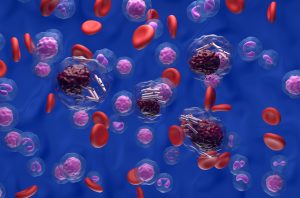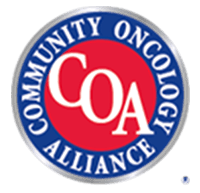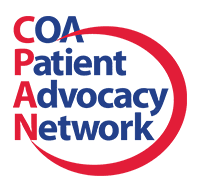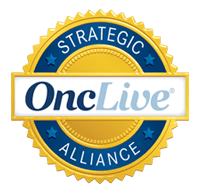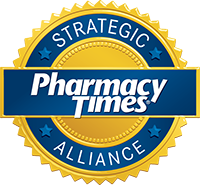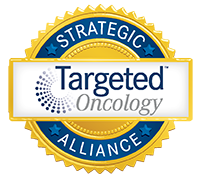Gurpreet S. Lamba, MD
What are the main types of leukemia? How do they differ in terms of their effects, how they present and how they are treated?
A. Leukemia is classified based on whether the malignancy originated from a lymphoid or myeloid white blood cell, and on how quickly the leukemia develops (i.e., chronic or acute leukemia). Based on these classifications, there are four types of leukemia:
- Acute myeloid leukemia is a cancer of the myeloid cells that comes on rapidly and is conventionally treated with chemotherapy and, if necessary, bone marrow transplant.
- Chronic myeloid leukemia develops more gradually, with an increase in white blood cells. This type of leukemia has a specific genetic translocation called the Philadelphia chromosome, which leads to generation of more white blood cells. Newer medications target this translocation and help patients live longer.
- Acute lymphoid leukemia affects the lymphoid cells, develops rapidly and is characterized by swollen lymph nodes and bleeding. This type is mostly seen in people younger than age 25 or older than age 45, and is typically treated with chemotherapy.
- Chronic lymphoid leukemia is a slow-growing cancer that increases white blood cells and is usually seen in older patients. Chemotherapy is a typical treatment option. However, targeted therapies have yielded promising results.
How do you treat each type of leukemia?
A. For an acute leukemia, we would start chemotherapy upfront. Based on the patient’s age, other medical problems and bone marrow report, we devise a combination chemotherapy treatment. Once we see the response to that chemo, and once we have more information about markers and molecular bone marrow results, we can decide whether this patient would need a stem cell transplant.
Treatment of chronic myeloid leukemia is more straightforward: Nearly all patients with this type of leukemia have the Philadelphia chromosome and can be treated with oral medication. For chronic lymphoid leukemia, we again review the patient’s markers. Not everybody with chronic lymphoid leukemia needs treatment; for those who do, we review the risk factors and indications for treatment and go from there.
How do chimeric antigen receptor (CAR) T-cell therapies work? How do they differ from long-term leukemia therapies?
A. CAR T-cell therapies have changed the way we’ll be treating leukemia in the future. Up to now, our only options have been chemotherapy or bone marrow transplant, through which the patient receives somebody else’s bone marrow to halt leukemia cell production. But now, we can genetically engineer the patient’s bone marrow or cells.
There are cells in the body called B cells and T cells. T cells form the immune system. Cancer so far has evaded the T cells completely. With CAR T-cell therapy, we take the patient’s T cells, modify them genetically and “give” them back to the patient, so that the T cells can attack the leukemia cells. In the process, the modified T cells “recruit” and “educate” additional T cells from the patient’s body to help them fight the cancer. This gives us hope for long-term remissions where none existed.
How many CAR T-cell therapies are FDA-approved or in the late stages of development?
A. Two CAR T-cell therapy agents are FDA-approved. One agent, tisagenlecleucel, is approved for treatment of refractory B cell acute lymphoblastic leukemia in patients ages 25 or older, either as second-line therapy or during relapse. The other agent, axicabtagene ciloleucel, is indicated for diffuse B cell lymphoma that is relapsed or refractory after two or more systemic therapies. Several other agents are in clinical trials in various stages.
What are the benefits and risks of these therapies?
A. The benefit is that we are now treating patients who before did not have a good prognosis and who would be subjected to more intense and potentially intolerable treatment, such as conventional chemotherapy.
These agents, however, can cause adverse effects. The most common side effect is cytokine release syndrome, which is characterized by swelling, fevers and an inflammatory response. As a result, CAR T-cell therapies must be administered at a center that can treat this adverse effect. Cerebral edema, or swelling in the brain, also was reported in a clinical trial.
Which patients with leukemia are candidates for CAR T-cell therapies?
A. It depends upon whether a protein or antigen can be found on the cancer cell that can be attacked with re-engineered T cells. The easy target has been CD19, which has been targeted for B cell leukemias and lymphomas. We are looking at newer antigens in other cancers, including myeloma, other leukemias and prostate cancer.
How are sequencing and combination therapy used?
A. Because CAR T-cell therapies are so new, it has not been combined with other therapies. As we gain experience with these treatments and more research is conducted, we will know more about how and in whom these agents should be used. For now, these therapies meet the highest unmet need in cancer: second- or third-line treatment in refractory or relapsed patients.
